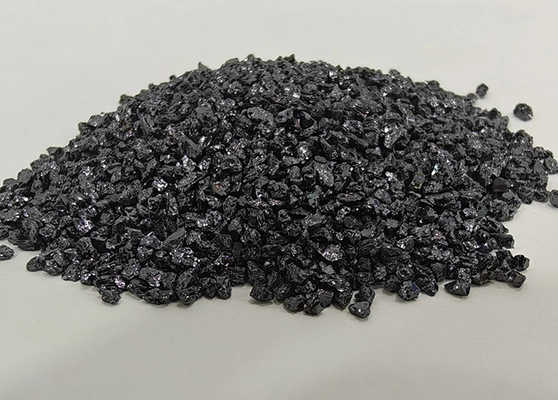Abrasive definition: An abrasive is a very hard material that removes, cuts, or polishes another surface through friction or erosion. Industrial buyers most often compare silicon carbide (SiC), brown fused alumina (BFA), white fused alumina (WFA), and zirconia alumina (ZA) across grit size, hardness, friability, and cost.
1) Abrasive definition & key properties
In procurement, “abrasive definition” covers three essentials: hardness, toughness/friability, and shape/size. Two supply forms matter most: macro grits (F4–F220) and micro powders (F240–F1200). You should always request a COA (Certificate of Analysis) with chemistry, grain size distribution, and sieve residues.
2) Choose the material
Silicon Carbide (SiC)
- Black SiC (C): sharp, brittle, high cutting speed; blasting, stone, general lapping.
- Green SiC (GC): higher purity & hardness; precision lapping, glass/ceramics polishing.
Brown Fused Alumina (BFA)
Tough, cost-effective; grinding wheels, sandblasting media, metal prep.
White Fused Alumina (WFA)
High purity Al2O3, friable; cool cutting on hardened steels, lapping/finishing.
Zirconia Alumina (ZA)
Very tough; heavy-duty grinding under high pressure, long life on metal removal.
3) Grit basics: FEPA ranges & applications
| FEPA F range | Typical use | Examples |
|---|---|---|
| F12–F60 (Coarse) | Rapid stock removal, rough blasting | Descaling, casting clean-up, stone shaping |
| F80–F220 (Medium) | Surface prep before coating, intermediate grinding | General machining finishes, belt sanding |
| F240–F400 (Fine micro) | Fine lapping and honing | Valve seats, carbide tools |
| F500–F1200 (Ultra-fine micro) | Precision polishing to low Ra | Optical glass, ceramics, sapphire |
4) Grain size distribution (highlight)
| Grade | Target D50 (µm) | D10 (µm) | D90 (µm) | Recommended material | Typical applications |
|---|---|---|---|---|---|
| F600 | ~9–12 | ~5–7 | ~15–20 | SiC / WFA | Fine grinding, pre-polish |
| F800 | ~5–8 | ~3–4 | ~10–13 | Green SiC (high purity) | Precision lapping, glass/ceramic polish |
| F1000 | ~3–4 | ~2–2.5 | ~6–8 | Green SiC / WFA | Mirror-like finishes |
| F1200 | ~2–3 | ~1.5–2 | ~4–5 | Green SiC / WFA | Ultra-precision polishing |
5) Quick selection by application
| Workpiece | Recommended abrasive | Start with grit | Notes |
|---|---|---|---|
| Glass / Ceramics | Green SiC micro powder | F800 → F1000 | High purity reduces scratch count. |
| Stone / Concrete | Black SiC | F36 → F120 | Coarse for shaping, medium for surface prep. |
| Carbon steel (heavy removal) | BFA / ZA | F24 → F60 | ZA extends life at high pressure. |
| Hardened steel finishing | WFA | F120 → F400 | Cool cutting; combine with vitrified or resin bond. |
| Carbide tools lapping | Green SiC | F400 → F1000 | Tight D90 recommended to avoid scratches. |
6) Sample policy (Korea • USD)
- Sample size: 0.5–2.0 kg per grade (SiC / BFA / WFA).
- Availability: Common grades ship within 3–5 working days.
- Price: Samples are free; courier freight billed at cost in USD.
- Documents: COA, MSDS; SEM image on request.
- To Korea: Express courier, transit 3–7 days.
7) FAQ
Q: What is the abrasive definition?
A: An abrasive is a hard, wear-resistant material used to remove material by friction. Common abrasives include SiC, BFA, WFA, and ZA.
Q: How do I choose the right grit size?
A: Match the grit to surface roughness and removal rate. Coarse (F12–F60) for heavy removal, medium (F80–F220) for shaping, fine (F240–F1200) for lapping/polishing.
Q: Do you offer samples to Korea and quote in USD?
A: Yes. We provide 0.5–2 kg samples of SiC/BFA/WFA to Korea. Quotes are issued in USD.
